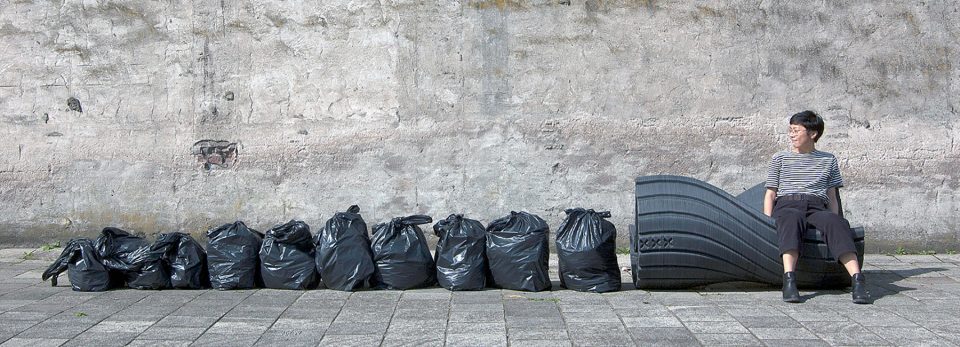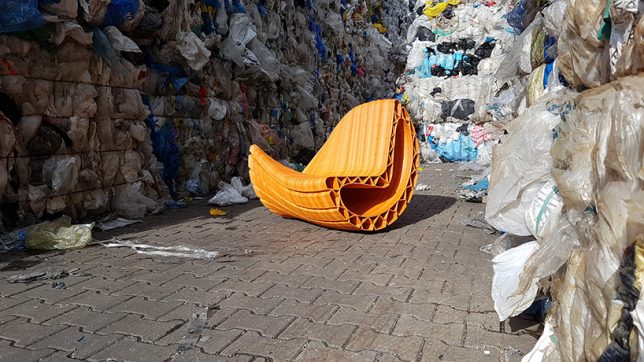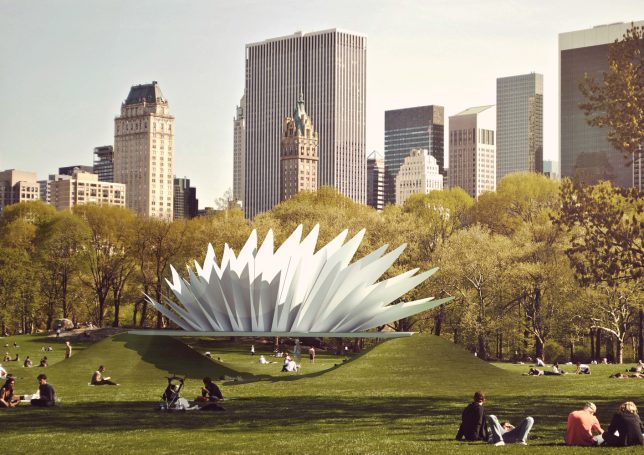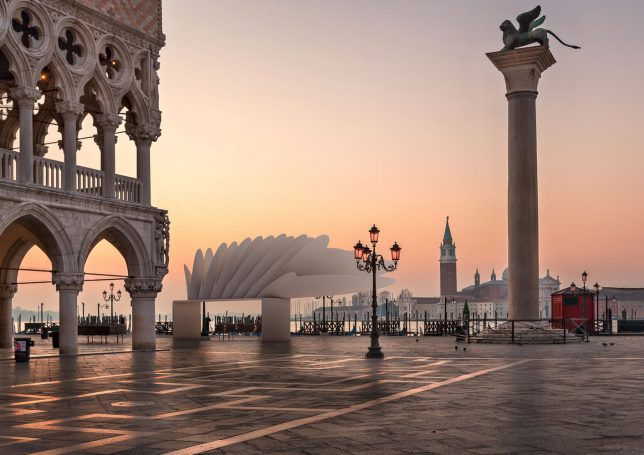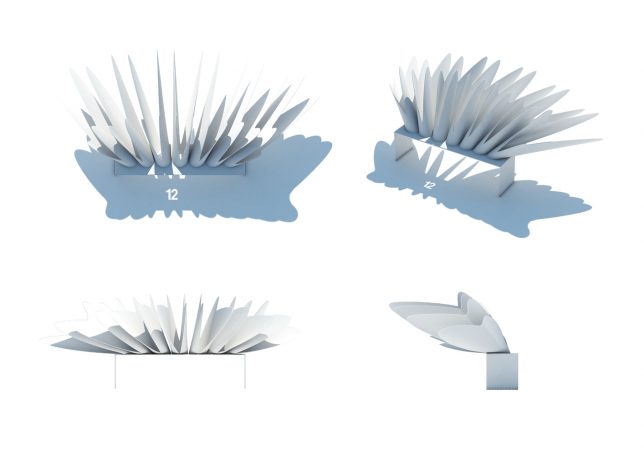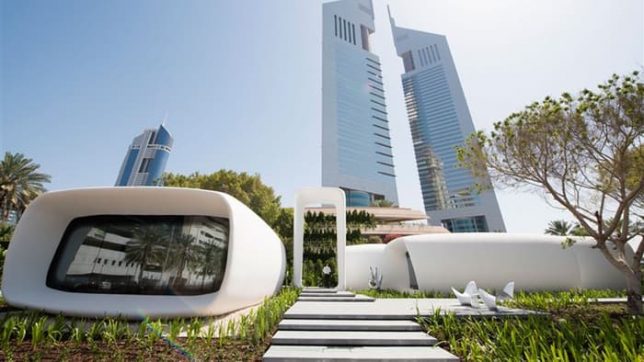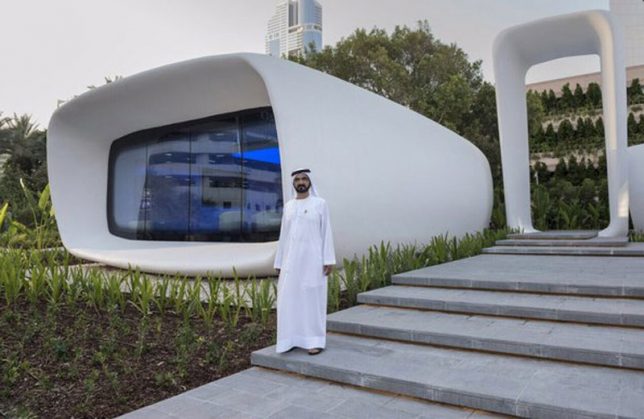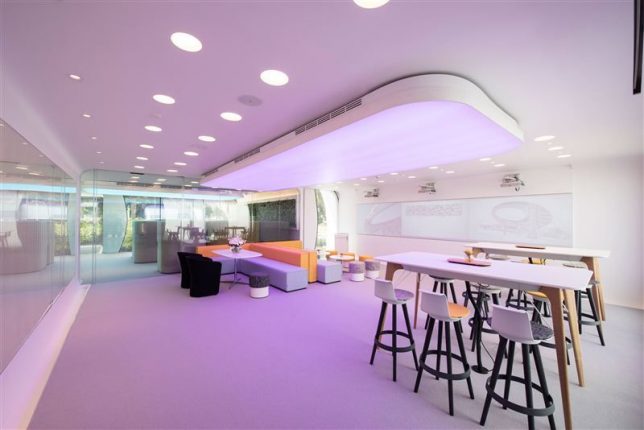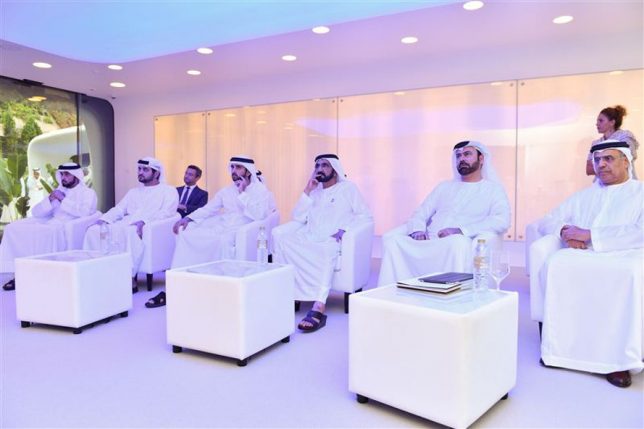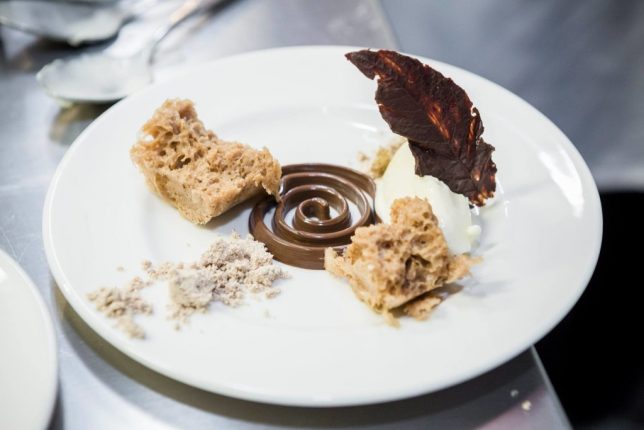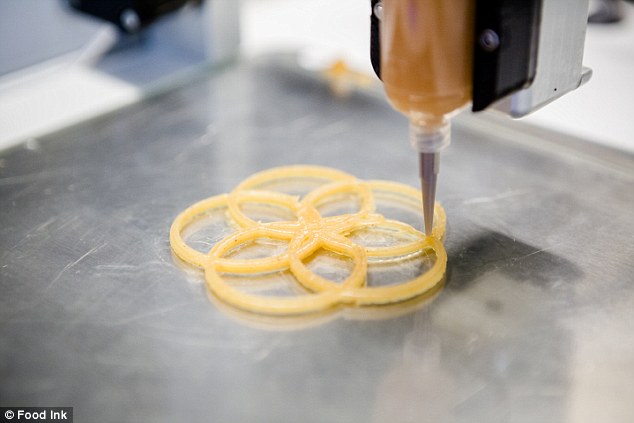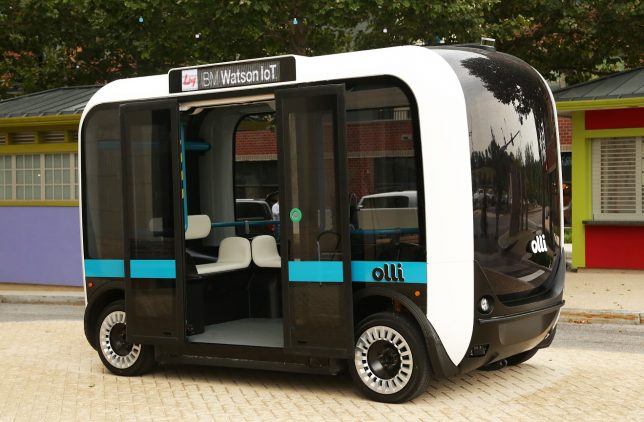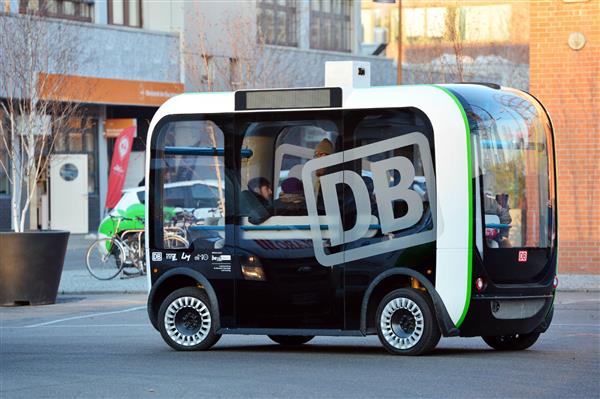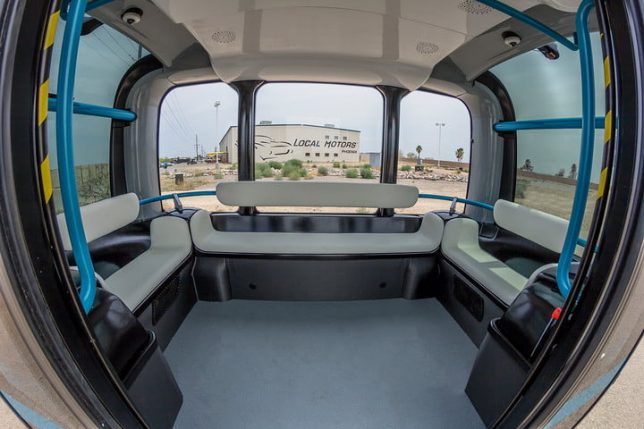Ready or not, the 3D-printed future is coming, and the first examples are already arriving in cities around the world in the form of office buildings, small houses, public furniture, public art and self-driving buses. Restaurants that squirt your meals into intricate shapes through a 3D printer will likely proliferate, and before long, this tech revolution is expected to take over all sorts of urban construction processes, like building roads and bridges. 3D printing requires far less labor than other building processes, of course, something that makes a lot of people nervous about the future of jobs. But it’s also cheaper, more sustainable, and results in far more complex, ornamental structures.
Public Furniture: 3D-Printed Benches Made of Trash Bags
‘Print Your City!’ is a new initiative by Rotterdam-based research and design studio ‘The New Raw’ transforming plastic waste into urban furniture with 3D printing. The ‘XXX Bench’ is a double-sided rocking chair seating two to four people who have to use equilibrium to balance the seat. Each one weights about 110 pounds, is made from recycled plastic pellets from municipal plastic waste or flakes from ground recycled products, and is 100% recyclable itself.
Public Art: Giant Sculptural Sundials
3D printing will likely invade urban environments in the form of large-scale public art before we see a whole lot of architecture and infrastructure. This giant sundial taking the form of a flowering fan is one example. Made by design group ‘prescription’ in conjunction with Arup, the geometry of the structure is optimized using specific solar data from any world location to give it a unique form wherever it’s constructed. It’s 3D printed from strong, flexible plastic, and the design is 100% scalable.
Office Buildings: ‘Office of the Future’ in Dubai
Dubai’s ‘Office of the Future’ is the world’s first 3D-printed office building, created layer-by-layer using a special cement mixture in just 17 days at a cost of just $140,000. Only one employee was needed to monitor the printer at any given time, while seven other employees installed the building components onsite along with electricians and specialists. The 3D printer used for the project is pretty remarkable itself, measuring 20 feet high, 120 feet long and 40 feet wide.
Restaurants: ‘Food Ink’ 3D-Printed Meals
While the building itself is not 3D printed, the food inside ‘Food Ink’ is. This pop-up restaurant uses 3D printers to create dishes like pizza, hummus, chocolate mousse and other foods that can be made with printed pastes to create culinary sculptures.The project is “putting to work most innovative technologies, like 3D-printing and augmented reality, in order to elaborate the most exquisite interactive edible experience.” How long will it be before this is a common practice in many restaurants?
Transportation: Autonomous 3D-Printed Bus
This boxy, strange looking bus by Local Motors debuted in Washington D.C. in 2016, giving autonomous rides at the company’s introductory event. The driverless, 3D-printed ‘Olli’ has 12 seats and is powered by IBM Watson’s Internet of Things for Automotive technology, a car-focused cognitive learning platform. “Olli offers a smart, safe and sustainable transportation solution that is long overdue,” says Local Motors. “Olli with Watson acts as our entry into the world of self-driving vehicles, something we’ve been quietly working on with our co-creative community for the past year. We are now ready to accelerate the adoption of this technology and apply it to nearly every vehicle in our current portfolio and those in the very near future.”
